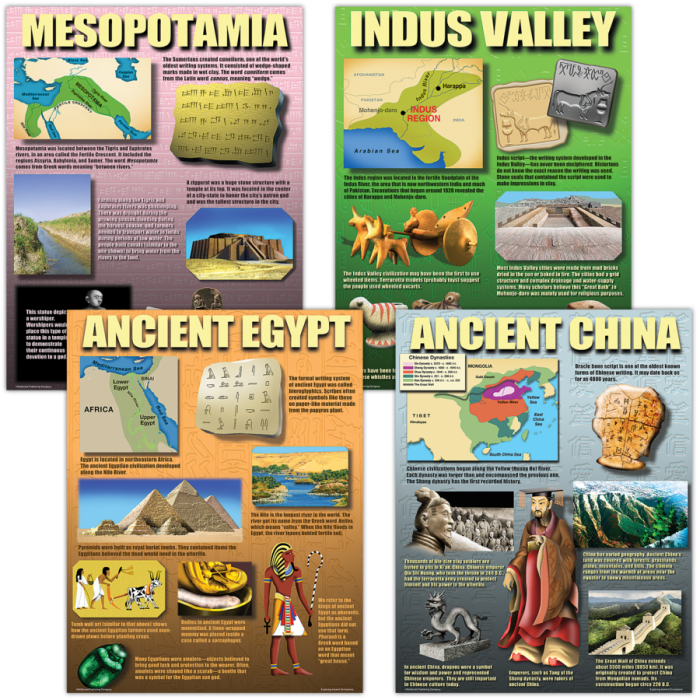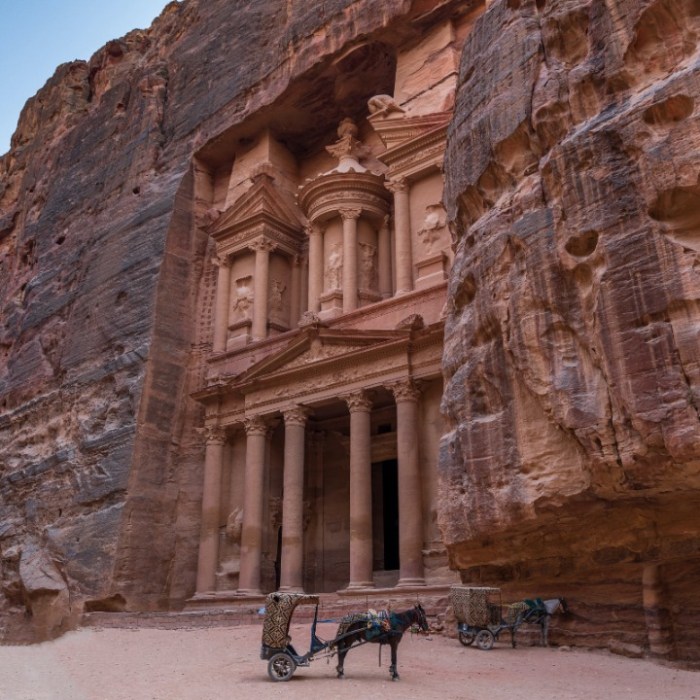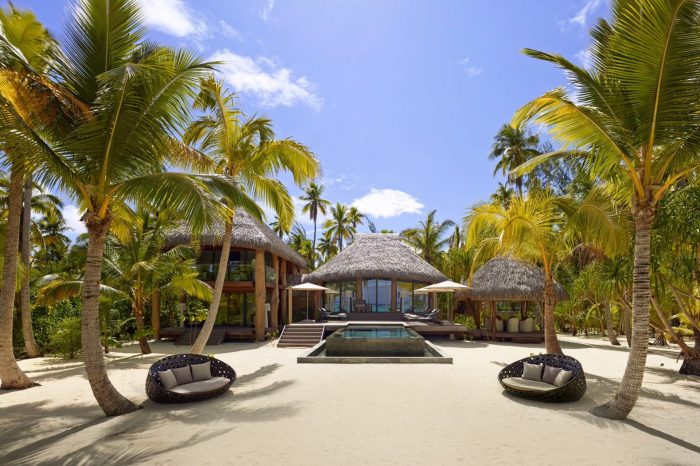
Travel bloggers exploring ancient civilizations sets the stage for this enthralling narrative, offering readers a glimpse into a world where history, adventure, and digital storytelling converge. This exploration delves into the diverse ways travel bloggers showcase ancient sites, examining their blogging styles, the impact of their work on tourism and preservation efforts, and the various methods they employ to monetize their unique content.
We’ll journey through hypothetical itineraries, ethical considerations, and luxury travel experiences, ultimately revealing how these digital explorers are shaping our understanding and appreciation of the past.
From the majestic pyramids of Egypt to the intricate ruins of Machu Picchu, travel bloggers are not just documenting these historical wonders; they are actively engaging with them, sharing their experiences with a global audience. This examination will cover the positive and negative consequences of increased tourism, highlighting the importance of responsible travel practices and the potential for luxury experiences within this niche.
We’ll also explore the innovative monetization strategies used by successful travel bloggers in this field, and how they are expanding their reach by connecting ancient civilizations with other luxury travel themes.
Travel Bloggers and Ancient Civilizations: Travel Bloggers Exploring Ancient Civilizations

Travel bloggers have significantly broadened access to information about ancient civilizations, offering engaging narratives and visually rich experiences that go beyond traditional academic resources. Their diverse perspectives and approaches illuminate these historical sites in compelling ways, attracting a wider audience and fostering a deeper appreciation for the past.
Diverse Exploration of Ancient Civilizations
Travel bloggers explore a vast array of ancient civilizations across the globe. From the majestic pyramids of Egypt and the intricate ruins of Machu Picchu in Peru, to the ancient cities of Mesopotamia and the enigmatic structures of Easter Island, bloggers showcase the remarkable diversity of human history. Some focus on specific regions, like the Roman Empire, while others adopt a more thematic approach, exploring commonalities in ancient agricultural practices or religious beliefs across different cultures.
This global reach offers a unique perspective, connecting seemingly disparate sites through shared human experiences.
Blogging Styles and Ancient Sites
The style of blogging used to showcase ancient sites varies considerably. Some bloggers opt for a highly academic approach, incorporating detailed historical analysis and archaeological findings into their narratives. Others prioritize visually stunning photography and videography, creating immersive experiences for their readers. Still others blend personal anecdotes with historical information, providing a more relatable and engaging account of their travels.
For instance, a blog focusing on Angkor Wat might emphasize the spiritual significance of the temple complex, while a blog about Pompeii might focus on the everyday lives of the citizens as revealed by the volcanic ash. This diversity in approach caters to a wide range of interests and preferences.
Emerging Trends in Ancient Civilization Travel Blogging
Three emerging trends in travel blogging focused on ancient civilizations are sustainable tourism, immersive experiences, and the use of technology. Sustainable tourism emphasizes responsible travel practices that minimize the environmental impact and benefit local communities. Immersive experiences involve interactive elements, such as virtual reality tours or augmented reality overlays, which bring ancient sites to life. The use of technology extends beyond immersive experiences, with bloggers increasingly leveraging drone photography, 360° videos, and interactive maps to enhance their storytelling.
For example, a blogger might collaborate with local artisans to promote ethical souvenir purchases, or use VR to allow viewers to “walk” through a reconstructed ancient city.
Hypothetical Itinerary: Mayan Ruins in Mexico
This itinerary focuses on exploring Mayan ruins in the Yucatan Peninsula, specifically Chichen Itza and Uxmal.
Accommodation:
The itinerary includes a mix of boutique hotels in colonial cities like Valladolid and Mérida, offering a blend of comfort and cultural immersion, and eco-lodges near the archaeological sites for a more sustainable approach.
Transportation:
Transportation will consist of a combination of rental car for flexibility exploring smaller sites and using local buses for cost-effectiveness and to experience local transport. Domestic flights could be considered to reduce travel time between distant sites.
Activities:
Day 1: Arrival in Cancun, transfer to Valladolid, explore the colonial city, overnight stay.Day 2: Visit Chichen Itza, explore the pyramid and other structures, learn about Mayan history and culture from a local guide.Day 3: Travel to Uxmal, explore the ruins, focusing on the unique architectural style of this site, enjoy a traditional Mayan dinner.Day 4: Visit a local cenote for swimming and relaxation, explore a Mayan village, participate in a traditional cooking class.Day 5: Transfer to Mérida, explore the city, enjoy the vibrant culinary scene.Day 6: Departure from Cancun.This itinerary balances exploration of major Mayan sites with cultural immersion and relaxation, showcasing a diverse range of experiences for a travel blogger focusing on Mayan civilization.
The Impact of Travel Blogging on the Preservation of Ancient Sites
The rise of travel blogging has profoundly impacted ancient sites, creating a complex interplay of positive and negative consequences for their preservation. While increased awareness and tourism can generate funds for conservation efforts, uncontrolled visitor numbers can lead to significant damage and degradation of these irreplaceable historical treasures. Understanding this duality is crucial for responsible travel blogging and ensuring the long-term survival of these invaluable cultural heritage sites.
Positive and Negative Effects of Increased Tourism on Ancient Sites
Increased tourism driven by travel blogs can provide much-needed revenue for the preservation and maintenance of ancient sites. Many historical locations rely on tourism income to fund restoration projects, employ local communities in preservation efforts, and provide essential infrastructure like visitor centers and improved access. However, unmanaged tourism can lead to significant negative impacts. Overcrowding causes physical damage to structures through wear and tear, pollution from increased traffic contributes to environmental degradation, and the sheer volume of visitors can disrupt the delicate ecosystems surrounding these sites.
The uncontrolled sale of counterfeit artifacts also fuels the illegal antiquities trade, further threatening the integrity of these locations. Finding a balance between economic benefit and environmental protection is a significant challenge.
Responsible Travel Practices for Protecting Ancient Sites, Travel bloggers exploring ancient civilizations
Travel bloggers hold a powerful position in shaping tourism trends. Promoting responsible travel practices is crucial to mitigate the negative impacts of increased visitor numbers. Bloggers can advocate for low-impact tourism, encouraging visitors to follow designated pathways, respect local customs and traditions, and avoid purchasing counterfeit artifacts. Highlighting alternative, less crowded routes and attractions can distribute tourism pressure more evenly, reducing the strain on popular sites.
Encouraging the use of public transportation or eco-friendly modes of travel also minimizes the environmental footprint of tourism. Furthermore, bloggers can actively promote responsible tour operators committed to sustainability and community engagement. By showcasing these responsible practices, bloggers can influence their readers’ travel choices and contribute to the preservation of ancient sites.
Social Media Campaign for Sustainable Tourism at Machu Picchu
A social media campaign promoting sustainable tourism at Machu Picchu could leverage the hashtag #RespectMachuPicchu. The campaign would feature visually stunning, high-quality images and videos showcasing the breathtaking beauty of Machu Picchu while emphasizing the importance of responsible visitation. Posts could highlight the fragility of the site, showcasing the effects of erosion and damage caused by uncontrolled tourism.
The campaign would also promote practical tips for sustainable travel, such as booking tours with responsible operators, using the official Inca Trail, and respecting the Inca culture and heritage. Influencer marketing, partnering with travel bloggers and environmental organizations, would amplify the campaign’s reach and impact. The campaign could also feature user-generated content, encouraging visitors to share their photos and experiences using the hashtag, fostering a sense of community and shared responsibility for the preservation of Machu Picchu.
Ethical Considerations for Travel Bloggers Visiting Ancient Sites
The following table Artikels ethical considerations for travel bloggers visiting ancient sites, emphasizing the importance of responsible and respectful travel.
| Issue | Potential Impact | Mitigation Strategy | Example |
|---|---|---|---|
| Overcrowding | Damage to structures, erosion, disruption of local communities | Promote off-season travel, suggest alternative less-visited sites, advocate for visitor limits | Instead of recommending a peak-season visit to Angkor Wat, suggest exploring lesser-known temples in the complex or visiting during the shoulder season. |
| Environmental Damage | Pollution, habitat destruction, water resource depletion | Promote eco-friendly travel options, emphasize minimizing waste, support local conservation efforts | Highlight the use of electric vehicles or cycling for exploring the area around the pyramids of Giza, reducing carbon emissions. |
| Cultural Sensitivity | Disrespect of local customs, appropriation of cultural heritage | Research local customs and traditions, dress appropriately, obtain permission before photographing people | Before visiting a sacred site, research appropriate attire and behavior, avoiding actions that might be considered disrespectful. |
| Economic Exploitation | Support of unsustainable tourism practices, unfair labor practices | Support local businesses that adhere to ethical standards, avoid bargaining excessively | Choose locally owned guesthouses and restaurants near archaeological sites, ensuring fair wages for workers. |
Monetization Strategies for Travel Blogs Focused on Ancient Civilizations
Building a successful travel blog focused on ancient civilizations requires not only captivating content but also a robust monetization strategy. Several avenues exist for bloggers to generate income while sharing their passion for history and exploration. Choosing the right approach depends on factors such as audience size, content quality, and personal preferences.
Affiliate Marketing
Affiliate marketing offers a relatively low-effort, high-reward method for monetizing a travel blog. It involves promoting products or services relevant to your niche – in this case, travel-related items like books on ancient history, guided tours of archaeological sites, travel insurance, or even specific travel gear – and earning a commission on each sale generated through your unique affiliate link.
This strategy is particularly effective for bloggers with established audiences who trust their recommendations. For example, a blogger could partner with a tour company specializing in archaeological expeditions and earn a commission for each tour booked through their affiliate link. Similarly, they could recommend specific travel guides or historical fiction novels related to the civilizations they cover.
The key to success lies in carefully selecting relevant products and naturally integrating affiliate links into your content, avoiding overt or intrusive advertising.
Sponsored Content
Sponsored content presents another viable monetization path. This involves collaborating with brands or organizations aligned with your blog’s theme to create content that promotes their products or services. For a blog focused on ancient civilizations, this could involve partnerships with museums, historical societies, tourism boards, or even luxury travel companies offering experiences related to ancient sites. Sponsored posts should maintain a high standard of quality and authenticity, reflecting your blog’s established voice and style.
Transparency is crucial; readers should clearly understand when a post is sponsored. A successful example could be a collaboration with a museum featuring a detailed review of a new exhibit, interspersed with personal anecdotes and travel tips relevant to the museum’s location. This approach benefits both the blogger, who receives payment for their work, and the sponsor, who gains exposure to a highly engaged audience.
Creating and Selling an Ebook or Online Course
A more involved, yet potentially highly lucrative, monetization strategy is to create and sell an ebook or online course focused on exploring ancient civilizations. This requires significant upfront effort in terms of research, writing, and content creation, but it can yield substantial long-term income. An ebook could be a comprehensive guide to exploring a specific region or civilization, offering practical advice on planning trips, navigating sites, and understanding the historical context.
An online course could delve deeper, perhaps providing expert insights into specific aspects of archaeology, history, or cultural understanding. The success of this strategy depends on the quality of the content, effective marketing, and the ability to establish a strong brand identity. For instance, a well-researched ebook on independent travel to the ruins of the Mayan civilization, complete with maps, itineraries, and practical tips, could attract a significant audience of adventurous travelers.
Similarly, an online course teaching photography techniques for capturing the beauty and history of ancient sites could appeal to a niche market of passionate photographers.
Affiliate Marketing vs. Sponsored Content
Both affiliate marketing and sponsored content are effective monetization strategies, but they differ significantly in their approach. Affiliate marketing requires less upfront effort and involves promoting existing products, while sponsored content involves creating original content tailored to a specific brand. Affiliate marketing typically yields smaller, more frequent payouts, while sponsored content can generate larger payments but requires more negotiation and planning.
The best approach often involves a combination of both, diversifying income streams and reducing reliance on a single monetization strategy. The key is to maintain authenticity and avoid compromising the integrity of your blog’s content.
Examples of Successful Travel Bloggers
While specific financial details are rarely publicly available, many travel bloggers focusing on ancient civilizations have built successful businesses. Although pinpointing specific financial success is difficult due to privacy concerns, the success of these blogs is evidenced by their large and engaged audiences, extensive content libraries, and clear monetization strategies incorporating affiliate marketing, sponsored content, and other avenues such as selling merchandise or offering personalized travel planning services.
These bloggers often leverage their expertise and passion to establish themselves as trusted authorities in their niche, attracting both readers and sponsors. Their success demonstrates the potential for building a profitable and fulfilling career by sharing one’s passion for ancient civilizations.
Luxury Travel Experiences Related to Ancient Civilizations

Exploring ancient civilizations doesn’t have to be a budget backpacking trip. For discerning travelers seeking a truly immersive and luxurious experience, numerous options cater to the highest standards of comfort and exclusivity, offering unparalleled access to history’s most captivating sites. These experiences transcend mere sightseeing, transforming into enriching journeys that connect the modern traveler with the legacies of past empires.
The allure of luxury travel in this context stems from a desire for personalized attention, unparalleled access, and the creation of unforgettable memories. It’s about more than just seeing the pyramids; it’s about experiencing the history, the culture, and the wonder in a way that resonates deeply. This heightened level of service and exclusivity elevates the entire experience, allowing travelers to fully appreciate the historical significance of the sites they visit.
Unique and Luxurious Travel Experiences Exploring Ancient Civilizations
Three unique luxury travel experiences related to exploring ancient civilizations are: a private hot air balloon ride over the Valley of the Kings in Egypt, offering breathtaking panoramic views of the ancient tombs at sunrise; a private yacht cruise along the Dalmatian Coast, visiting the ruins of Diocletian’s Palace in Split and other ancient sites while enjoying five-star amenities; and a private guided tour of Machu Picchu, including exclusive after-hours access to the citadel, allowing for intimate exploration without the crowds and a private gourmet dinner overlooking the ancient city.
These experiences combine historical significance with unparalleled luxury and comfort, creating truly unforgettable moments.
The Appeal of Private Guided Tours and Exclusive Access to Ancient Sites
Private guided tours offer a level of personalization and expertise unmatched by larger group tours. Expert historians and archaeologists provide insightful commentary, tailoring the experience to the individual traveler’s interests. Exclusive access, often achieved through special arrangements with local authorities, allows for a more intimate and meaningful exploration of the sites, free from the distractions of large crowds.
This fosters a deeper connection with the history and culture, enhancing the overall travel experience. Imagine exploring the Colosseum in Rome after closing hours, or walking through the Angkor Wat temples at dawn, with only your guide and the rising sun as companions. This level of access transforms a simple visit into a truly transformative experience.
Luxury Travel Package: Exploring Ancient Egypt
This brochure Artikels a ten-day luxury travel package focusing on exploring the wonders of Ancient Egypt. This itinerary prioritizes comfort, exclusivity, and enriching experiences, ensuring a journey that exceeds expectations.
| Item | Description | Price (USD) |
|---|---|---|
| Accommodation | Seven nights at the Four Seasons Hotel Cairo at Nile Plaza and two nights at the Oberoi, Aswan. | $15,000 |
| Activities | Private guided tours of the Giza Pyramids, Sphinx, Valley of the Kings, Karnak Temple, Abu Simbel, and a Felucca ride on the Nile. Hot air balloon ride over the Valley of the Kings. | $10,000 |
| Transportation | Private chauffeured transportation throughout the tour. Domestic flights included. | $3,000 |
| Meals | All meals included, featuring exquisite Egyptian cuisine and fine dining experiences. | $2,000 |
| Total | $30,000 |
High-End Travel Accessories for Exploring Ancient Sites
Careful consideration of appropriate accessories can significantly enhance the comfort and enjoyment of exploring ancient sites. The following items represent a selection of high-end options suitable for such journeys.
- High-quality, lightweight backpack with ample storage and organizational compartments.
- Comfortable walking shoes designed for uneven terrain and extended periods of wear.
- Wide-brimmed hat for sun protection.
- High-SPF sunscreen and after-sun lotion.
- Portable charger for electronic devices.
- Binoculars for detailed viewing of distant features.
- High-quality camera with extra batteries and memory cards.
- Travel-sized first-aid kit with essential medications.
In conclusion, the world of travel blogging intersects with ancient civilizations in a dynamic and multifaceted way. Bloggers play a crucial role in both promoting tourism and raising awareness about the preservation of these invaluable sites. By understanding the ethical considerations, monetization strategies, and the potential for luxury experiences, travel bloggers can contribute meaningfully to the ongoing conversation surrounding ancient history and cultural heritage.
Their captivating narratives, high-quality visuals, and responsible travel practices are essential to ensuring these wonders continue to inspire and educate future generations.
FAQ Insights
What are the biggest challenges faced by travel bloggers focusing on ancient civilizations?
Challenges include obtaining permits and access to certain sites, dealing with logistical difficulties in remote locations, and ensuring the responsible and ethical documentation of culturally sensitive sites.
How can travel bloggers ensure their content is both engaging and historically accurate?
By consulting with archaeologists, historians, and local communities, fact-checking information rigorously, and acknowledging the complexities and nuances of the historical narratives they present.
What legal considerations should travel bloggers keep in mind when photographing or filming at ancient sites?
They should be aware of and abide by local laws and regulations regarding photography, filming, and drone usage at historical sites. Permits may be required in many instances.
How can travel bloggers contribute to the local economies of the areas they visit?
By patronizing locally-owned businesses, hiring local guides, and promoting responsible tourism practices that benefit the communities surrounding the ancient sites.





